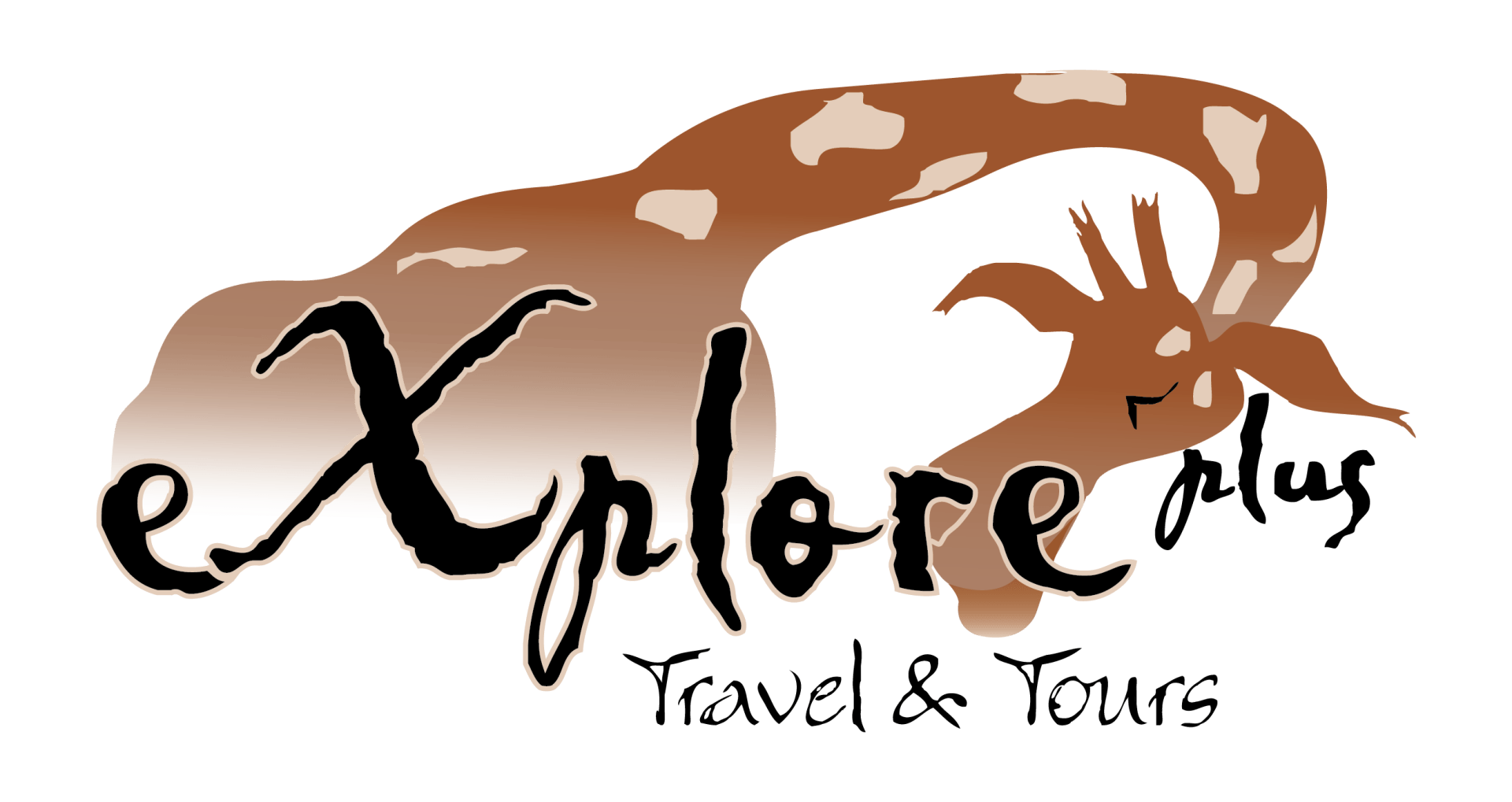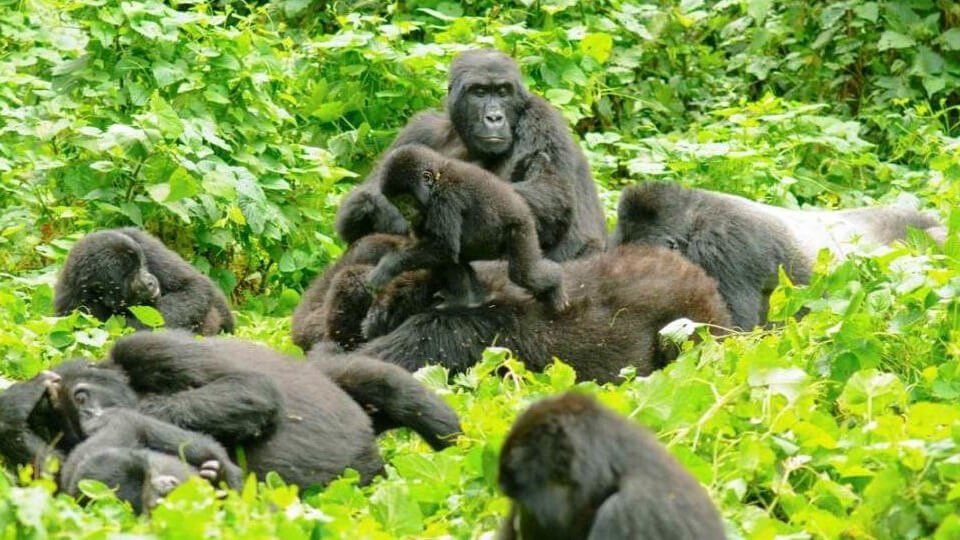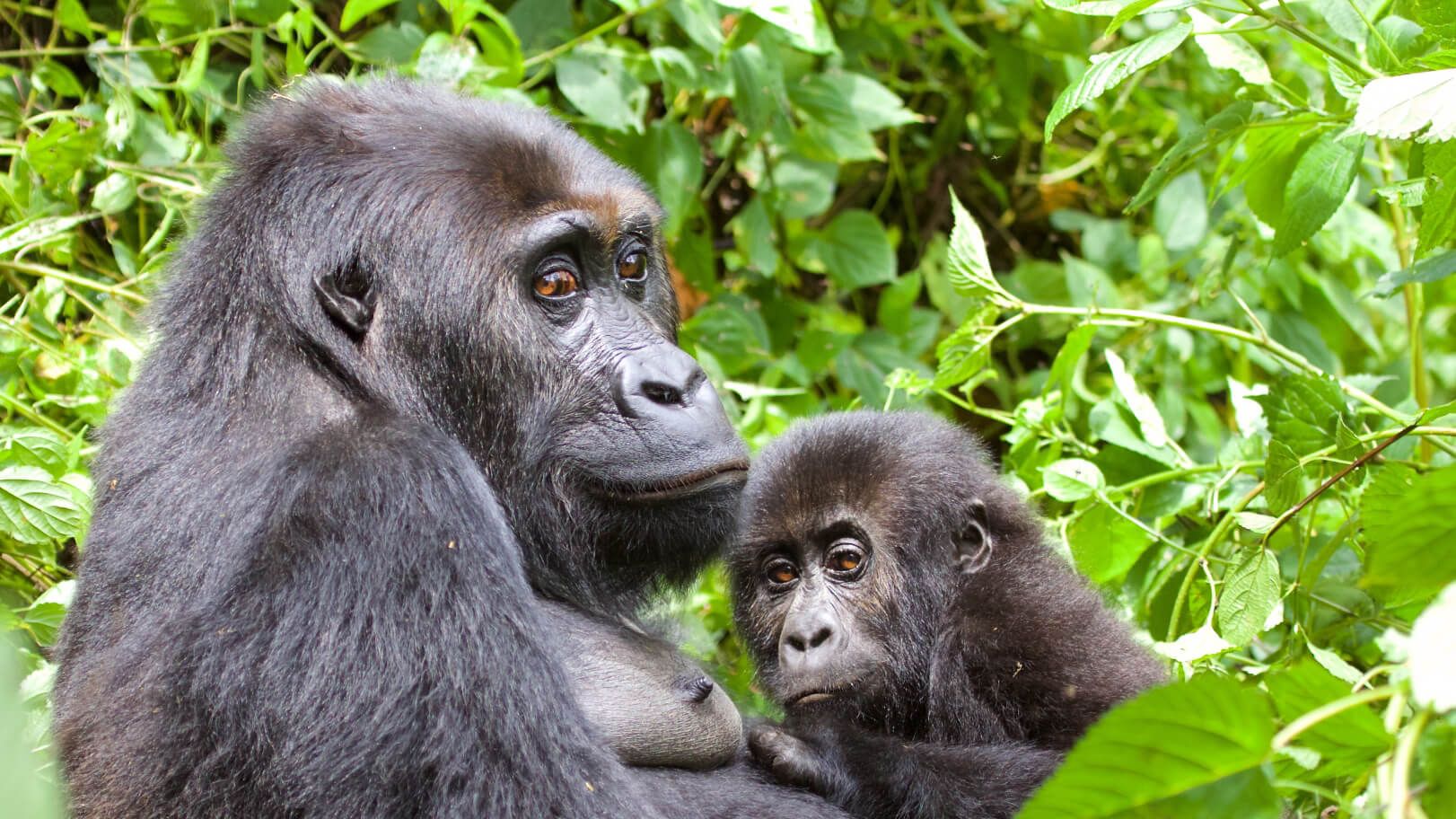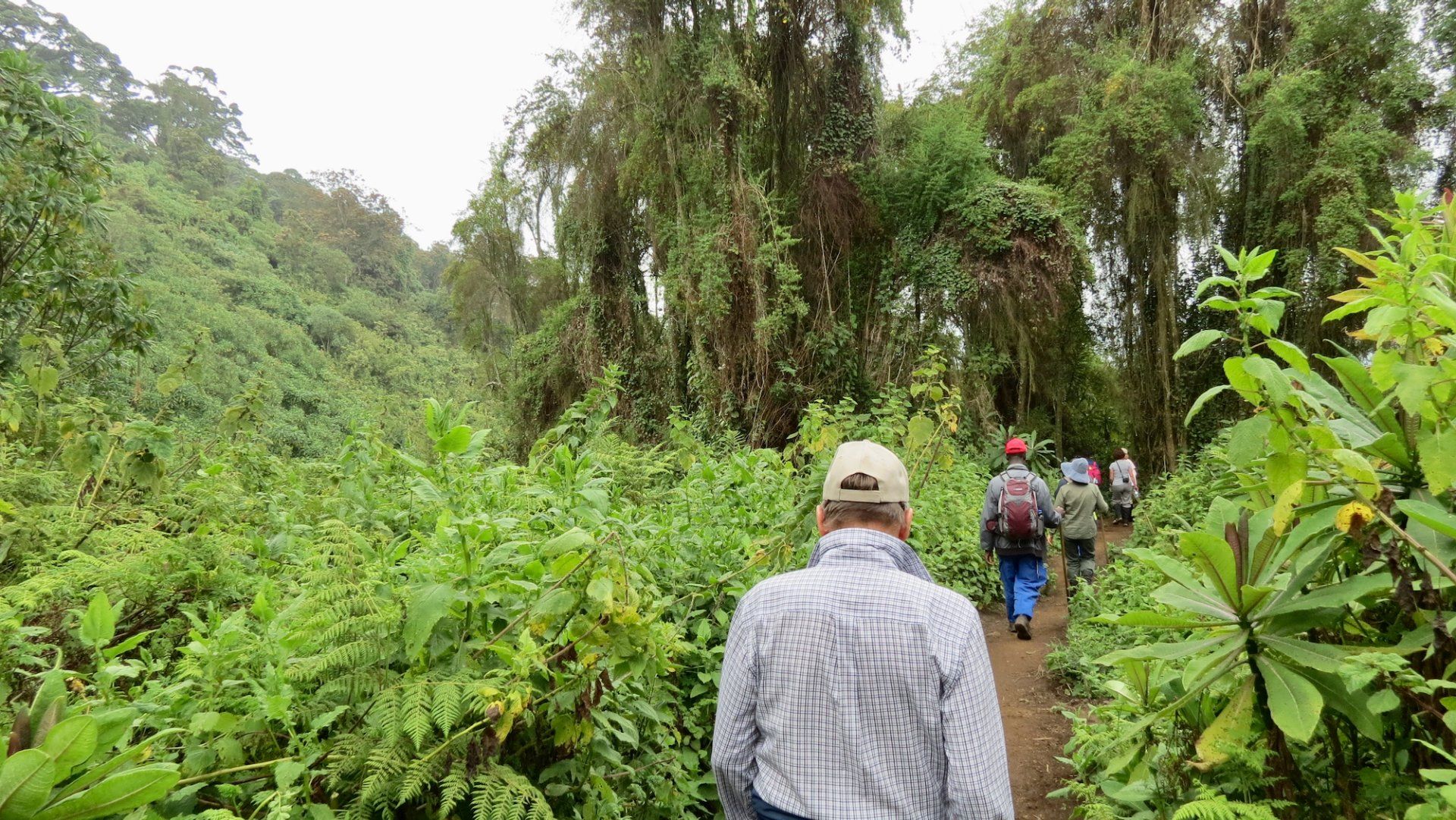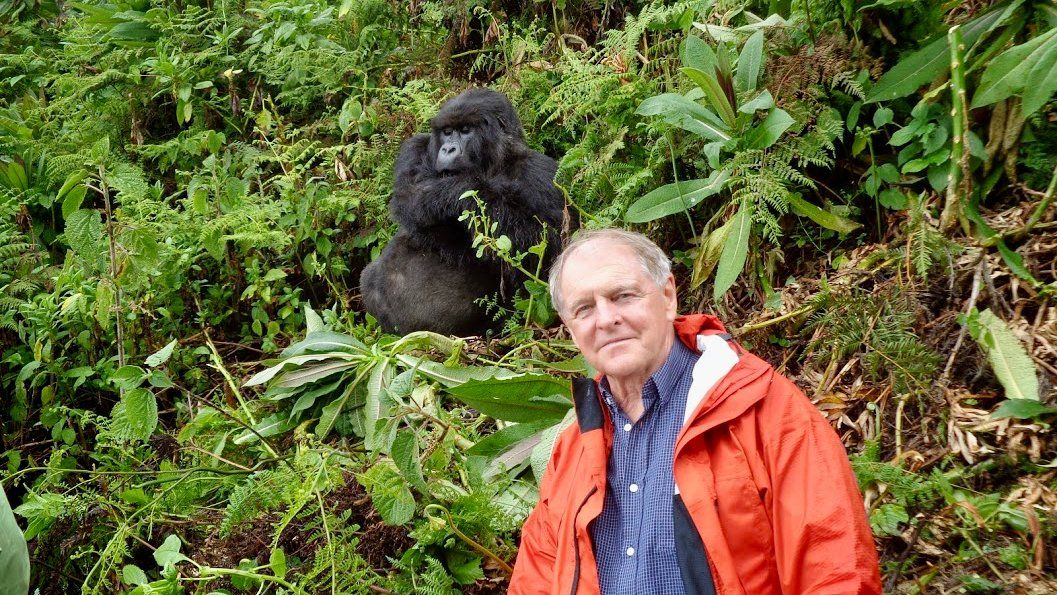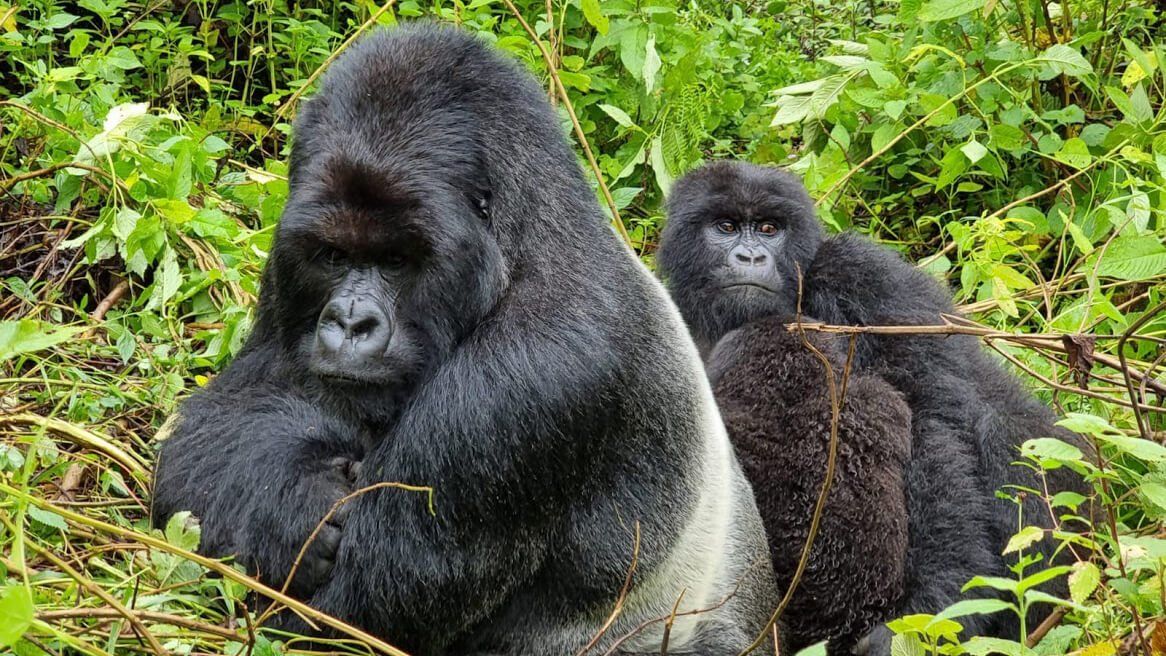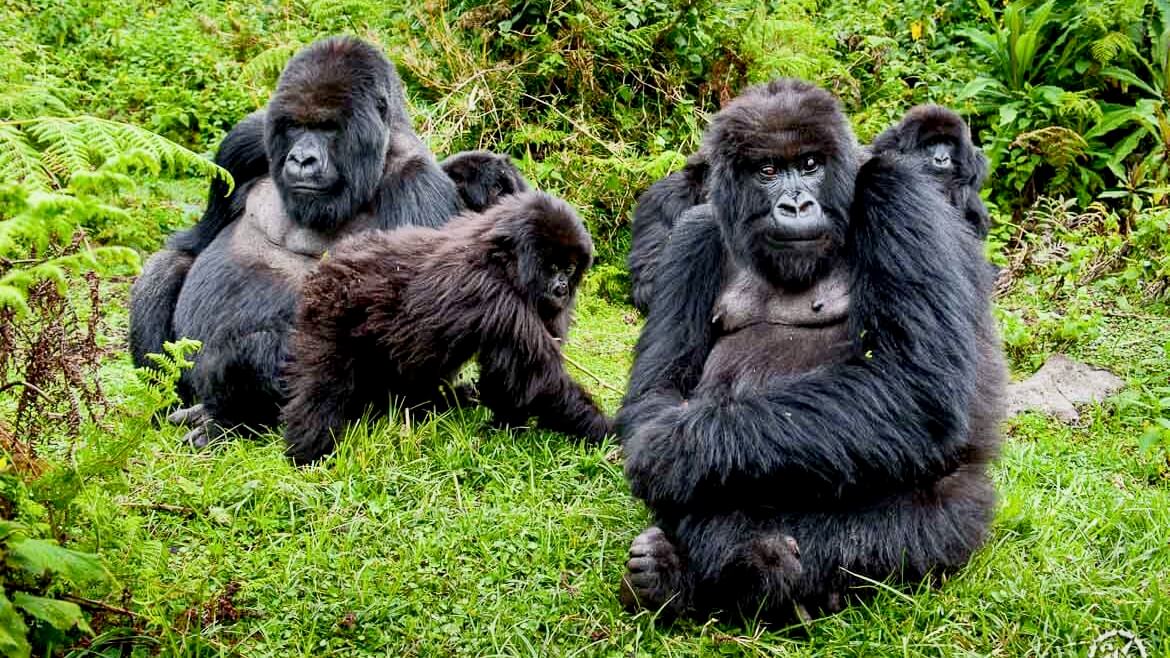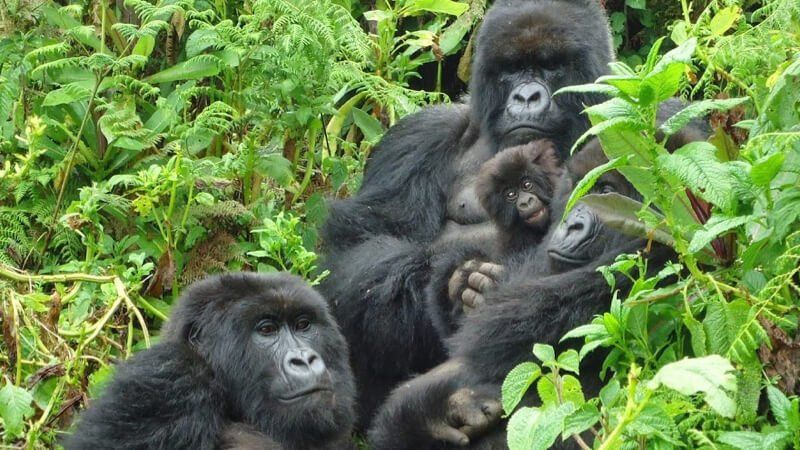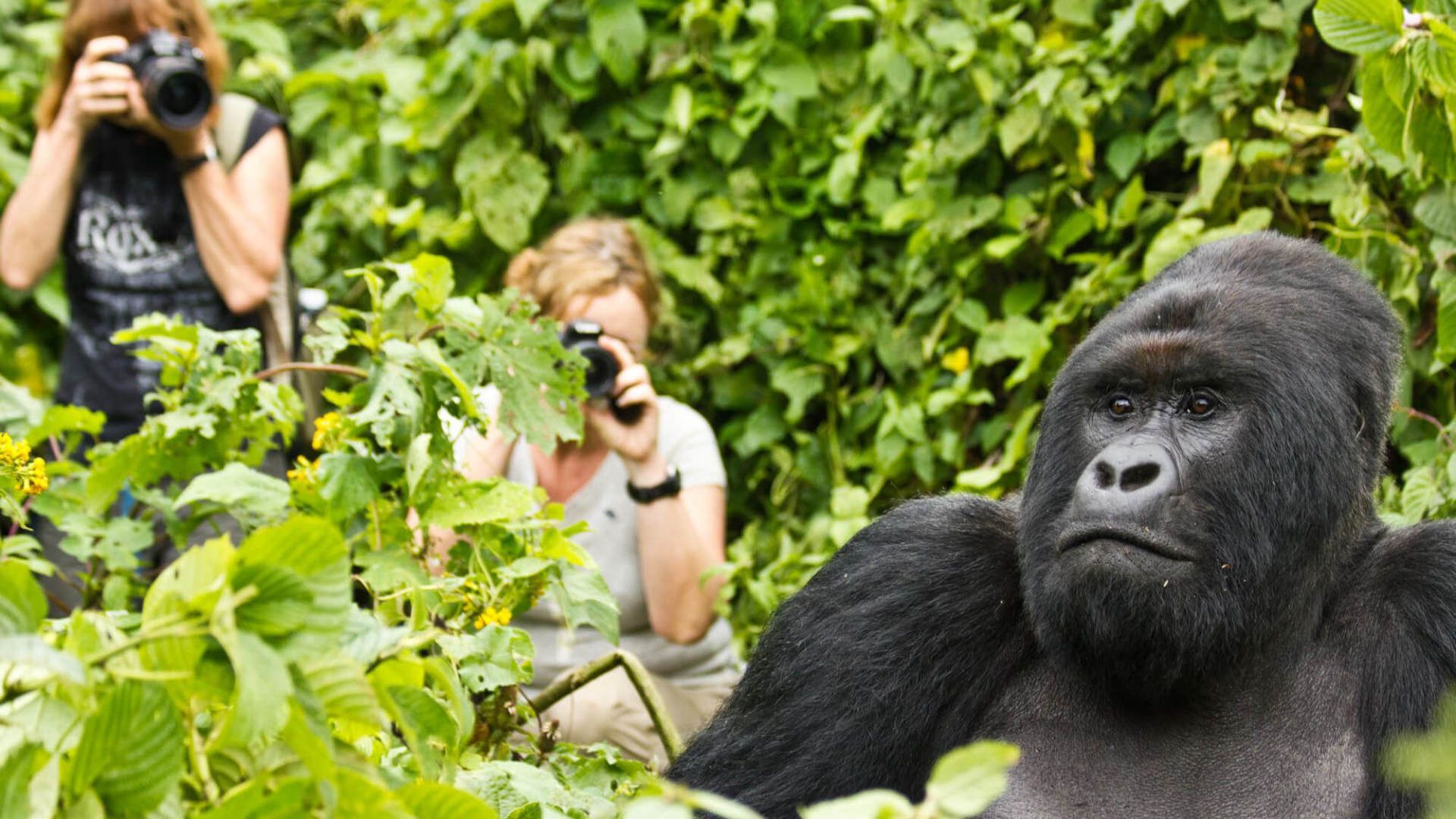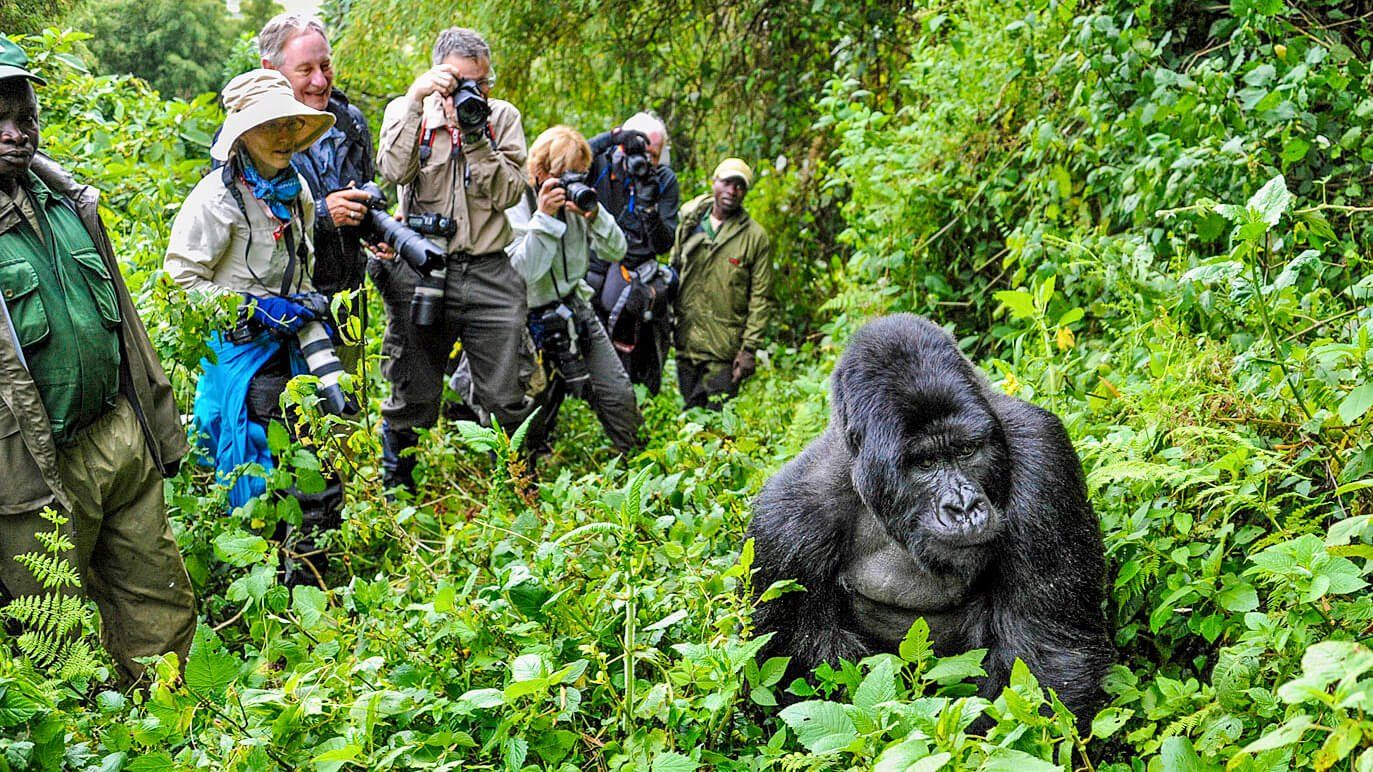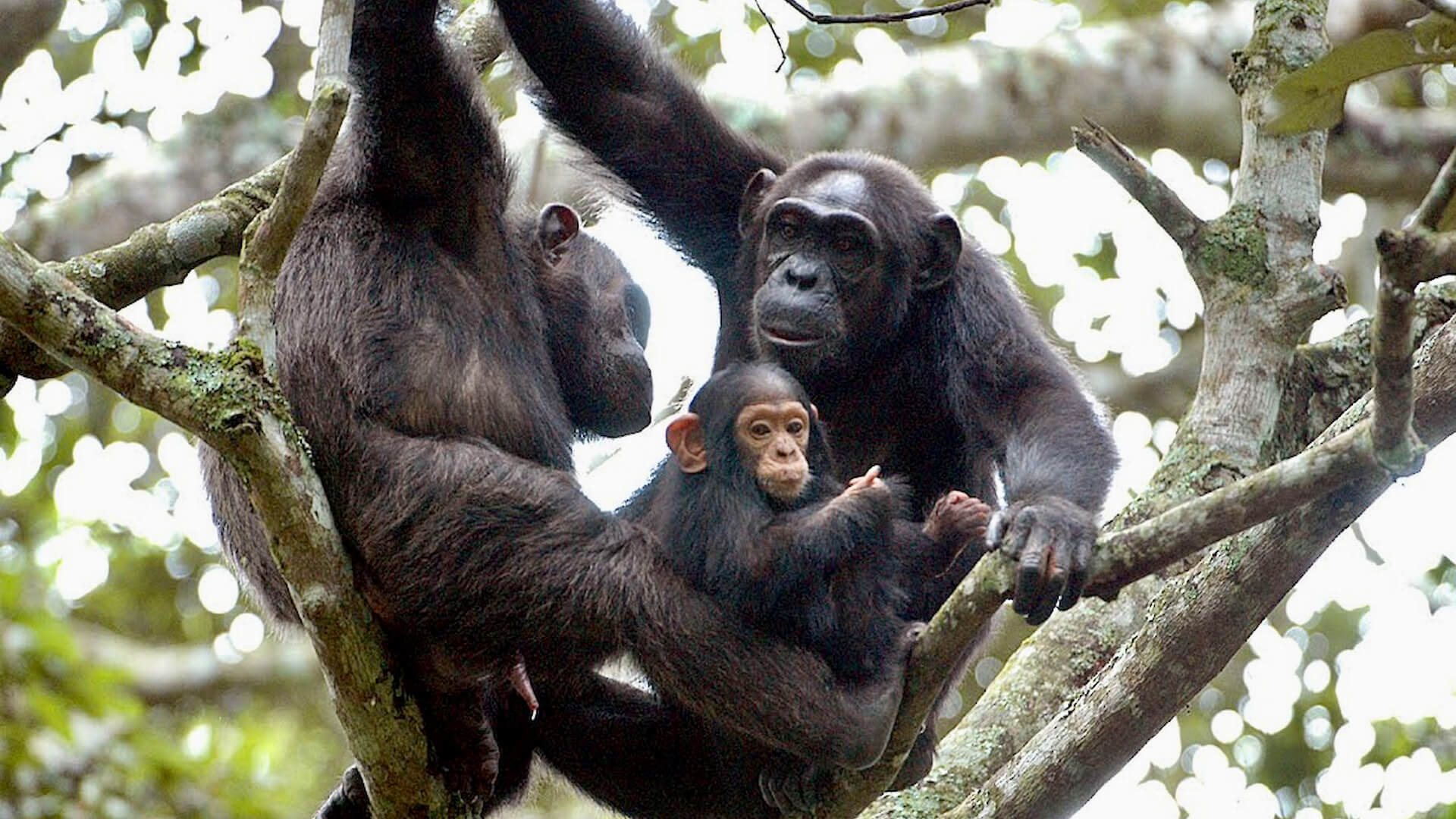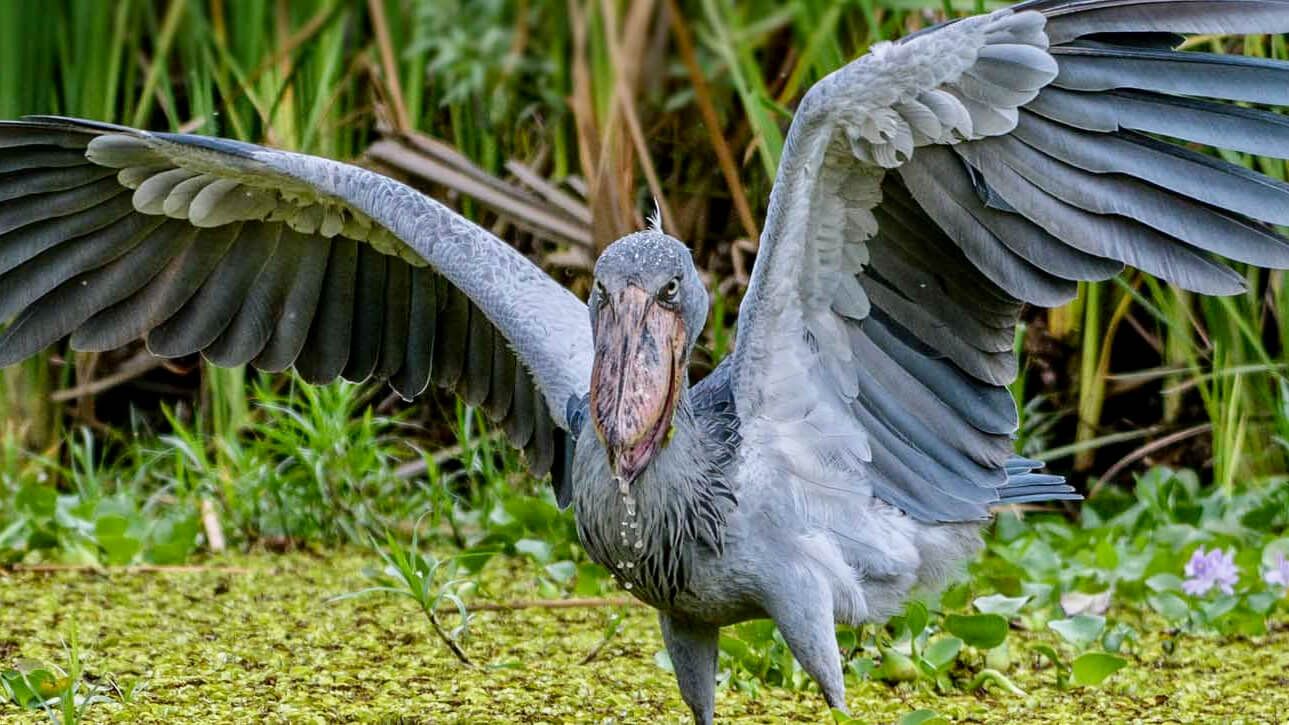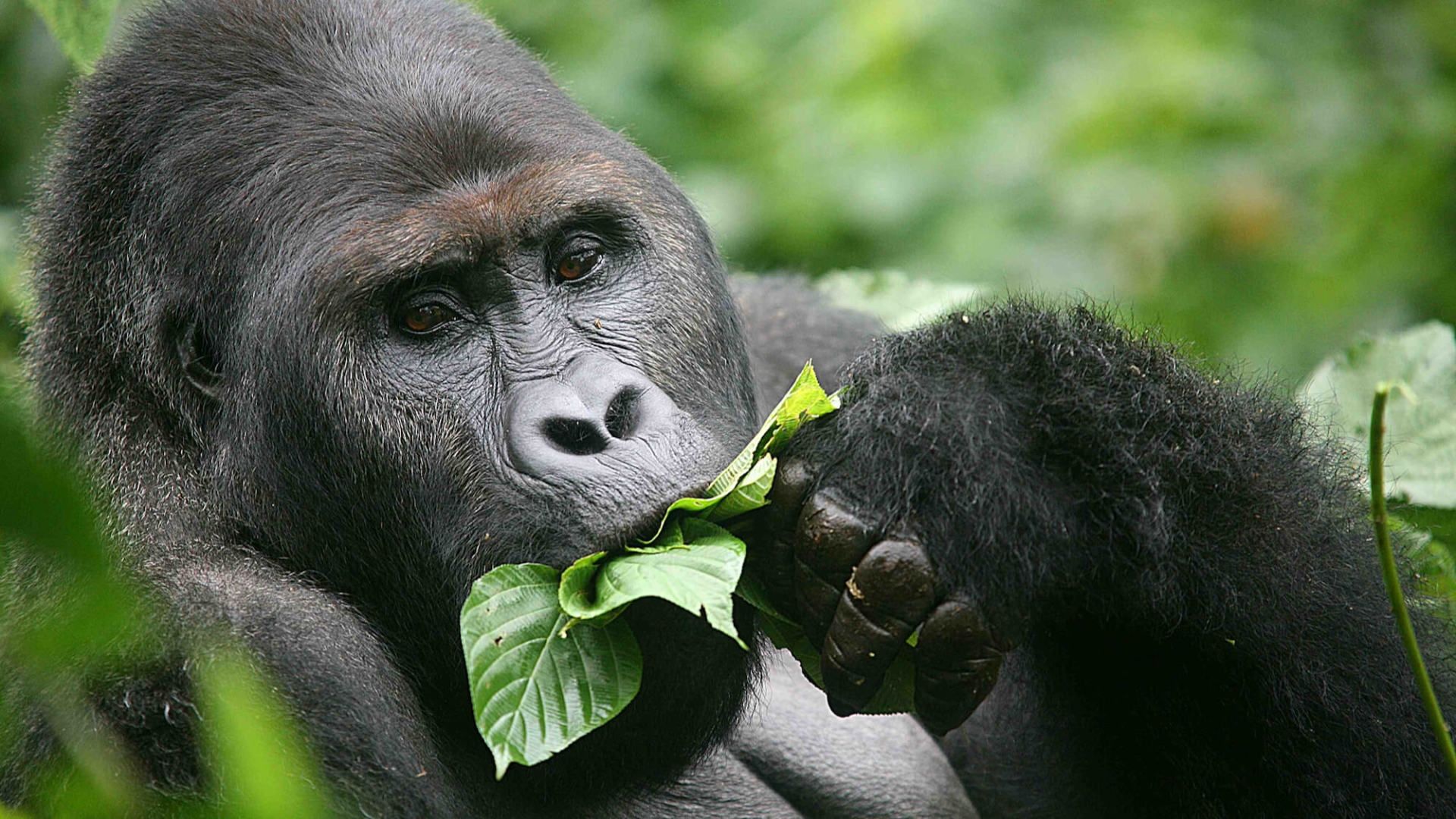Gorilla Trekking
Gorilla trekking is certainly a unique, once in a lifetime wildlife experience not to be missed! A face-to-face encounter with a silverback gorilla in the wild is ranked the best wildlife experience in the world.
Gorillas are by no means tame. They are wild animals and will tolerate human presence for an hour a day at most. Experienced guides will accompany you on your trekking, many of who have been involved in the habituation process themselves. On arrival, these guides will brief you in detail about the various aspects of “gorilla etiquette”, but the main aim is to equip you to make the most of this unique opportunity.
Best places in the world to trek gorillas
Rwanda
The latest census confirmed that over 600 mountain gorillas live in the Virunga complex and reside on the altitude range of 2 300 to 4 500 meters in the southern area of Virunga National Park in the DRC, the Volcanoes National Park in Rwanda and some in Uganda’s Mgahinga National Park.
Volcanoes National park has 19 mountain gorilla families . There are only 10 habituated groups which means, a maximum of 80 gorilla trekking permits are issued per day . For those interested in seeing the gorillas in their natural habitat, Rwanda offers one of the easier locations for gorilla trekking.
When going on Rwanda gorilla tours in the Volcanoes National Park, it is an easily accessible gorilla park located roughly 2 hours and 30 minutes’ drive from Kigali.
The cost of a gorilla trekking permit in Rwanda cost US$1,500.
Uganda
When going to a Uganda gorilla tour, you can trek Mountain Gorillas in two parks, Bwindi Impenetrable Forest and Mgahinga Gorilla National Park, which is home to over 500 mountain gorillas.
There are 17 habituated gorilla families in the Bwindi Forest with 136 gorilla trekking permits available each day. However, if you do not book long in advance the change is very slim that you’ll get permits. Bwindi Forest is divided into four sectors from where guest can trek gorillas - Buhoma in the north, Ruhija in the east and Nkuringo and Rushaga in the south. The cost of a gorilla trekking permit in Uganda cost US$700 as from 1 July 2020.
At Bwindi (only from the Rushaga sector in the South) you can enjoy the gorilla habituation experience in which wild gorillas are habituated to make them familiar with human presence. A gorilla habituation experience permit costs US $1500 and is restricted to a maximum of 4 travellers to spend four hours with the wild gorillas.
Mgahinga Gorilla National Park shelters 2 gorilla families.
The Bwindi Forest and Mgahinga Gorilla National Parks are roughly 5 hour’s drive from the capital of Rwanda, Kigali, which makes gorilla trekking possible even if you have limited time.
DR Congo
Virunga National Park has about 150 mountain gorillas with 8 gorilla families habituated for gorilla trekking. A permit costs $400, making it the most affordable destination to trek gorillas.
Kahuzi-Biega National Park have 8 Eastern Lowland Gorilla families , with 2 gorilla families habituated for gorilla trekking. You can also enjoy the unique experience of gorilla habituation at Kahuzi-Biega where you hike along rangers, researchers and gorilla doctors. The experience is all about familiarising wild gorillas to the presence of human beings. A gorilla habituation experience permit costs US $600 per permit. Currently there are 2 gorilla families that can be visited. It is restricted to a maximum 4 travellers per gorilla family, spending four hours with the wild gorillas.
The Republic Of Congo (Also Called Congo Brazzaville)
- What To Expect On Your Trek
Once you arrive at the park headquarters or trail head you will be briefed by the park’s rangers and guides. When the trek begins, there is no pre-determined length of time you will spend in the forest. It will depend on the movements of the gorillas and where they have slept the previous night. Treks can last for 30 minutes or up to 5 hours. The terrain can be difficult, with steep slopes and covered in dense vegetation. In addition, the park’s height above sea level ranges from 1000 to 2000 metres, which means participants do need to be physically fit to enjoy the trek. Once the gorillas are located, your group will be allowed a maximum of one hour with them. After this, you will return to the park gate.
Because it is impossible to predict the length and difficulty of the trek, it should not be attempted by anyone who is not in a very good physical condition. Trekking is likely to involve scrambling through, over and under dense undergrowth with nettles, barbed vines and bamboo thickets. Correct footwear and clothing are essential. It is recommended that you build up the strength and endurance of your leg muscles by walking, climbing stairs, doing knee bends and similar exercises before you leave home.
Your group's lead tracker has his "own" gorilla family. He forms a close bond with them by visiting them daily and by studying their home range and travel routes. All trackers are experienced in looking for signs of gorilla activity such as footprints, dung, chewed bamboo and celery stalks and abandoned nests from the previous evening. Gorillas soil their nests and then abandon them to build new ones each night. Trackers are able to tell the age of the nests as well as identify the group that made it.
Although the trackers allow time to stop and rest along the way, they do maintain a somewhat upbeat pace throughout the trek. They aim to ensure that you will reach the gorillas in time to spend a full hour with them before heading back.
You will probably smell the gorillas before you actually see them. When you reach them, the tracker will move forward, making soft smacking and groaning sounds with his mouth to assure the group that friends are approaching. Although gorillas make very few vocalisations, this sound of reassurance is one that family members often use with each other.
If your trek to find the gorillas has not been unusually long, you will likely see them during their long midday rest and play period. At this time of day, the dominant male (usually a silverback) generally lounges on the ground or against a tree while youngsters roll in the vegetation and climb on trees, vines and each other. Females nurse and play with their infants.
- What To Pack For Your Gorilla Trek
- A small, lightweight, frameless, waterproof backpack
- Light, waterproof hiking boots or shoes with tread soles
- Thick socks
- Camera (no flash photography allowed on the trek)
- Leather or heavy canvas (gardening-style) gloves
- Waterproof rain pants, a rain suit or a poncho with a hood
- A short-sleeved shirt or t-shirt. Long trousers made of light-weight material
- A sweatshirt or sweater – not necessary on the trek, as it gets very hot during trekking
- Waterproof, foldable hat
- Water bottle - bottled water and a packed lunch is provided by the lodge
- Health Precautions
DON’T TREK GORILLAS if you know you have an illness that is contagious. You might pass the disease on to the gorillas with disastrous results. If you suspect that you have such an illness, report it to our head office or to the guide at the park headquarters. There is a good chance that you will be refunded for the cost of your gorilla permit. If you do not disclose your illness and the guide detects it, you will be barred from trekking and you will not get a refund. Illnesses include colds, coughs, diarrhoea and influenza.
- Regulations And Rules Of Conduct
It is important that all gorilla trekking participants familiarise themselves with the following regulations and rules of conduct.
- You MUST, at all times, follow the instructions of your guide. He is in contact with the gorillas every day and understands them well. Always remain in a quiet, compact group behind the guide, who will attempt to position you in such a way that the dominant male of the group can see you at all times.
- Noise levels must be kept to a minimum so as not to disturb the gorillas.
- A 7m distance from the gorillas should be observed at all times.
- If the dominant male gorilla, usually a silverback, approaches very closely, or if he charges, it is very important that you do not move backwards or run. Remain exactly where you are, look downward and adopt a submissive, crouched posture.
- NEVER make any sudden movements.
- If a young gorilla approaches, NEVER, under ANY circumstances, make any move to touch it.
- If a gorilla stares at you, look away or downward immediately.
- NEVER use a flash when photographing the gorillas. Move slowly and carefully when taking pictures.
- Only visitors in good health AT THE TIME OF THE TREK will be permitted to trek gorillas, as gorillas are susceptible to colds and other respiratory diseases transmitted by humans.
- All visitors must be physically fit and capable of enduring a walk of several hours in difficult terrain.
- At this time, all gorilla visits are limited to a maximum of 8 persons per gorilla family for a maximum length of one hour.
- Eating and/or drinking near the gorillas are not permitted.
- No smoking on the trek.
- It is prohibited to destroy any vegetation unnecessarily. All visitors must carry their own litter out of the park, leaving NOTHING behind.
- If you need to cough or sneeze when you are near the gorillas, please turn your head away and cover your nose and mouth to minimise the spread of bacteria or viruses.
- Gorilla Facts
Adult males develop a silver spray of hair across their back and hips, hence earning the name “silverback”. This occurs at about 12 to 15 years of age. The lifespan of gorillas are 40-50 years and females will have their first infant between the ages of 10 and 12. Their gestation period is nine months and their inter-birth interval three to five years.
The age categories used for classification are:
Infant: Birth to three and a half years
Juvenile: Three and a half years to six years
Subadult: Six to eight years
Blackback: Eight to 12 years. Adult female: from eight years onwards
Silverback: From 12 years onwards
Interesting gorilla facts:
- No two gorillas have identical nose-prints.
- Gorillas do not drink water. They obtain all the moisture they need from the vast amounts of foliage they consume.
- Gorillas have larger muscles in their arms than in their legs (the opposite is true for humans).
- They have 32 teeth - the same number as humans with two full sets of teeth during their lifetime, similar to humans. Their first set of teeth (similar to human’s baby teeth) is replaced by their permanent set as adults.
- Unlike monkeys, they do not have tails.
- The Four Subspecies Of Gorillas
Mountain Gorillas (G. beringei beringei)
They live in the dense vegetation of Bwindi Impenetrable Forest National Park (Uganda) and along the Virunga mountain range that stretches across Volcanoes National Park (Rwanda), Mgahinga Gorilla National Park (Uganda), and Virunga National Park (DRC). Mountain gorillas have longer, thicker fur than other subspecies, helping them to survive in colder temperatures.
They are critically endangered, with an estimated 1000 individuals living in the wild. Males weigh around 14kg to 169kg with a standing height of 1.4m to 1.8m.
Eastern Lowland Gorillas (G. beringei grauri)
The Eastern Lowland Gorilla can be found in Kahuzi-Biega National Park in DR Congo. They are the largest of the gorilla subspecies and although they resemble mountain gorillas, they have longer arms, shorter fur and teeth, narrower faces and rounder nostrils. With a population estimate of a mere 4000 individuals, they are listed as endangered. Males have an average weight of 210kg and height of 1.8m when standing upright.
Western Lowland Gorillas (G. gorilla gorilla)
The Western Lowland Gorilla can be found in Cameroon, Central African Republic, Gabon, Congo and Equatorial Guinea. These gorillas are smaller and lighter than the other subspecies, have short hair, a wider skull and a more pronounced brow ridge. Though more numerous than other subspecies, they are listed as critically endangered because of threats from habitat destruction.
The Western Lowland Gorilla is the most widespread gorilla, possibly numbering 100 000. Adult males weigh between 130kg up to 220kg and can be up to 1.8m tall, standing upright.
Cross River Gorillas (G. gorilla diehli)
These gorillas are scattered in at least 11 groups across the lowland montane forests and rainforests of Cameroon and Nigeria. They are the world's rarest great ape, with fewer than 300 individuals surviving in the wild. Cross River gorillas are very similar in appearance to the Western Lowland Gorilla, but subtle differences can be found in the skull and tooth dimensions. Adult males weigh up to 200kg and can reach a height of 1.2m to 1.7m when standing upright.
Want to come face-to-face with mountain gorillas? Check out our gorilla safaris!
SPECIAL - RWANDA GORILLA TREKKING
GROUP SAFARI
DISCOUNTED GORILLA
PERMIT RATE!
4 days / 3 nights
Highlights: Gorilla Trekking in Volcanoes National Park
Departure dates: 28 May / 26 Nov & 10 Dec '25
UGANDA GORILLA TREKKING
GROUP SAFARI
4 days / 3 nights
Highlights: Gorilla Trekking in Bwindi NP
Date: 20 - 23 Jul / 06 - 09 Sep '25
RWANDA & UGANDA GORILLA TREKKING
GROUP SAFARI
4 days / 3 nights
Hightlighs: Kigali & Gorilla Trekking in Bwindi NP
Date: Jun / Jul / Sept 2023
RWANDA GORILLA & CHIMPANZEE SAFARI
7 days / 6 nights
Highlights: Gorilla & Chimpanzee Trekking
Date: Private Safari
UGANDA GORILLA & CHIMPANZEE TREKKING
GROUP SAFARI
9 Days / 8 Nights
Highlights: Gorilla & Chimpanzee Trekking
Date: 20 - 29 Sep 2025
BEST OF UGANDA
10 Days / 9 Nights
Highlights: Murchison Falls / Chimp and Gorilla Trekking
Date: Private Safari
BIRDING, CHIMPANZEE & GORILLA SAFARI
10 Days / 9 Night
Highlights: Mabamba Swamp / Semliki / Kibale NP / Bwindi NP
Date: Private Safari
MOUNTAIN & LOWLAND GORILLA SAFARI
8 Days / 7 Nights
Highlights: Mountain Gorilla, Chimpanzee & Eastern Lowland Gorilla Trekking
Date: Private Safari
What Our Clients Say About Our Safaris & Tours
SIGN UP FOR OUR NEWSLETTER
Africa is calling – Sign up to our newsletter today!Get exclusive access to the latest on exclusive offers, getaways and travel inspiration.
Contact Us
We will get back to you as soon as possible
Please try again later
Copyright © 2024 Digital Zoo Website Design Company - All Rights Reserved
Domain Registration
|
Email Address
|
Website Design
|
Graphic Design
|
Social Media Management
|
Search Engine Optimization
|
Online Marketing
|
Web App Developer
All Rights Reserved | Explore Plus Travel & Tours
All Rights Reserved | Explore Plus Travel & Tours
